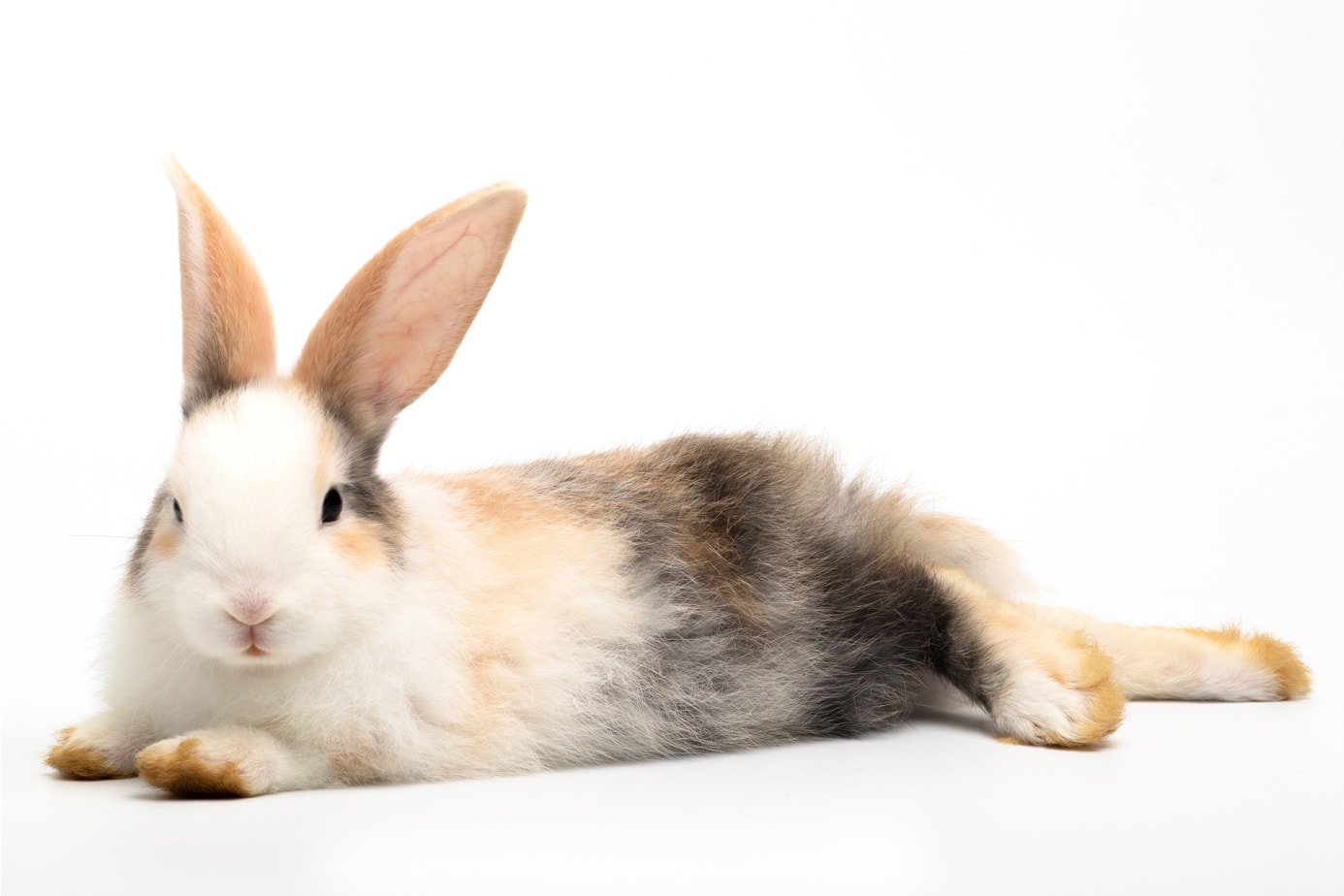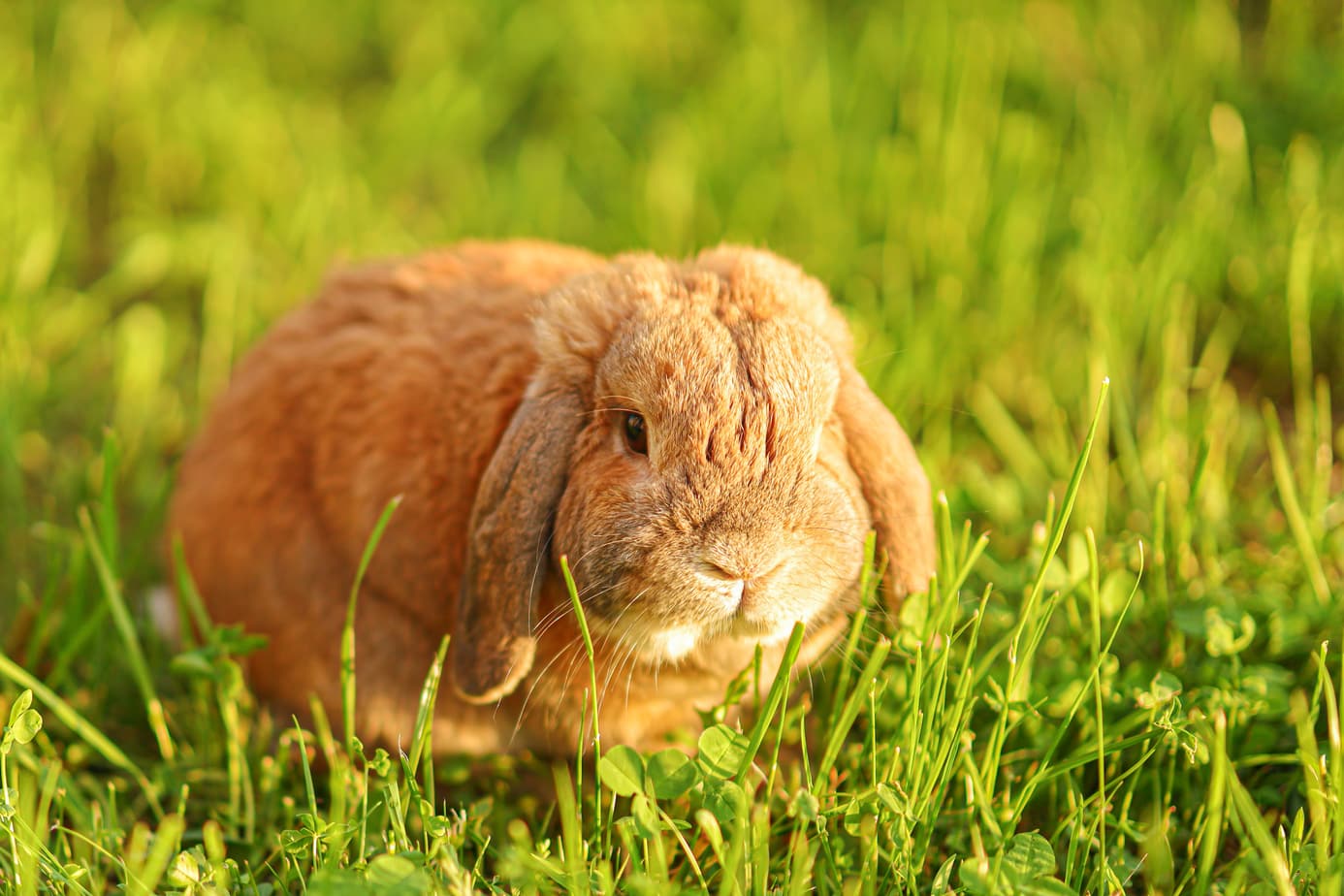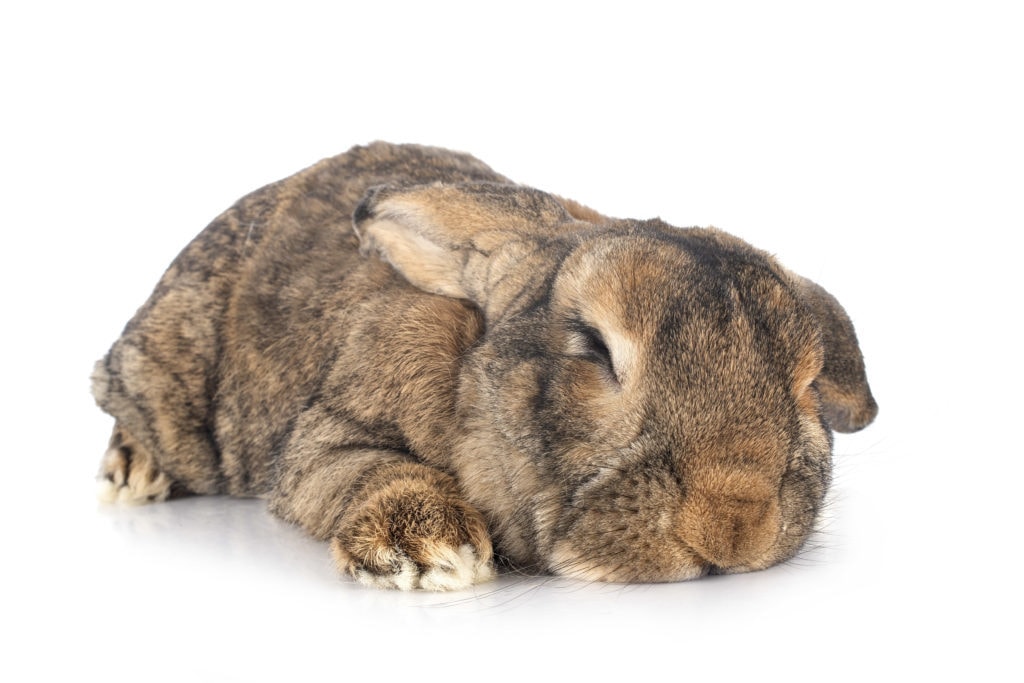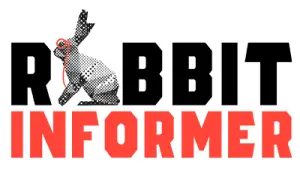
Have you noticed that your rabbit has been laying on its side a lot lately? In this article, we are going to explain what this type of body language means when it comes to your pet rabbit and if you should be concerned.
A rabbit laying on its side is a sign of a happy rabbit. Your rabbit is relaxed and comfortable in this body position. However, if your rabbit tries to get up from laying on its side and can’t, this is a sign that your rabbit is sick and should be taken to a vet.
There’s a lot more to know when it comes to understanding the body language of your pet rabbit. Let’s dive in to see exactly why your pet rabbit may be laying on its side.
When You’re Rabbit Is Laying on Its Side (“Flopping”)
You catch your rabbit suddenly flopping down on its side and you wonder, “What on earth was that?” Well, that is a very good sign of a happy, healthy rabbit and it’s actually called “flopping”. This behavior typically happens after they eat a handful of greens, and they’re lying in their cage.
When laying on their side, rabbits might stretch or wiggle. Sometimes they roll their eyes to the back of their head, which can look a little alarming, but it’s actually a good thing.
If you have multiple rabbits around, you might notice them doing this frequently around each other. This means that they are comfortable with each other.
When a rabbit lays on its side, it’s in its most comfortable position. The rabbit’s rear legs are stretched out sideways while laying down. The longer it would take the rabbit to get up and hop away from its position, the more relaxed it is. A very relaxed rabbit might even lie on its back. If they lay on their back or their side outside the comfort of their cage, this shows that they are very comfortable with the environment they are in.
Rabbits are very territorial. If you try to reach into their cage while they are relaxed or trying to sleep, they may get angry. Make sure that you are giving your rabbit some space, especially when they seem to be in a relaxed state, or you may get bitten or charged at.
More Signs Of A Healthy Rabbit
While your rabbit laying on its side is a very good sign that they’re healthy, there are many other signs to look for that indicate that you’re taking great care of your rabbit.
The first thing to look for in a healthy rabbit is clear and bright eyes. Pull up on the eyelid and check to see if the eyelid tissue is pink. If their eyelids are a red color, that means their eyes are inflamed and is a sign of an infection.

Next, check the inside of your rabbit’s ears. If your rabbit’s ears are clear of any wax or dirt buildup, your rabbit’s ears are healthy. Rabbits may need an occasional, general cleaning of their ears. All you have to do is take a cotton pad with saline solution or warm water and gently clean out their ears of any unnecessary buildup. Also, the temperature of your rabbit’s ears can give you an indication of their general health. For more information on using ear temperature to gauge health, see my article Should a Rabbit’s Ears Be Warm? (Is He Sick?) here.
It’s important to also check the bottom of your rabbit’s chin. Rabbits have a scent gland under their chins. Make sure you are frequently checking the bottom of your rabbit’s chin for any waxy buildup. If you see this waxy buildup, carefully trim it away. You can also try to wipe it away with warm water.
Next, take a look at your rabbit’s teeth. You can do this by gently pulling the upper lip back. Make sure that your rabbit’s upper teeth are aligning with its lower teeth while creating a slight overbite.
If your rabbit’s front teeth are growing over the lower teeth and are long, that means your rabbit’s teeth have a malocclusion. In other words, your rabbit has a bad bite. This can make it hard for your rabbit to eat, which can result in significant health problems in the future.
DID YOU KNOW? A few of your rabbit’s teeth will continue to grow its entire life, and yes, it’s normal! To learn which teeth continue to grow and how to identify healthy (or unhealthy) teeth, see my article Ever Wonder Why Rabbit’s Teeth Keep Growing here.
Another way to make sure your rabbits stay healthy is to keep your rabbit’s nails trimmed. When trimming your rabbit’s nails, you need to first locate the “quick” which is the part of the nail that contains blood. Once you’ve located the quick, hold your index finger and your thumb above the quick. It’s important to locate the quick so you know you are not cutting into the vein.
Signs Of An Unhealthy Rabbit
An unhealthy rabbit is an inactive one. Activity may change with increased age, but those changes will be gradual rather than sudden. If your rabbit suddenly becomes aggressive and seems tired, your rabbit may be trying to tell you that something is wrong. If your rabbit is laying on its side and it doesn’t have the energy to get up, that is a sign that your rabbit is unhealthy and needs attention from a vet.
Your rabbit may not want to eat food either. If your rabbit hasn’t eaten for more than 12 hours, that is a red flag in your rabbit’s health as well. A rabbit needs fiber in its diet to avoid any dental problems.

You should also be sensitive to any changes in vocalization. If your rabbit expresses aggressive growling, or teeth grinding, that is something to be concerned about. Teeth grinding sounds like a “purring” sound, but much louder. This is a sign that they are experiencing pain.
Another thing to keep an eye out for is if your rabbit starts losing its fur. If they are shedding excessively or spend a lot of time grooming themselves or scratching, this is usually a sign of underlying health concerns. Often, lost fur is associated with external parasites. While this could be the case, there are many other possibilities and reasons your rabbit could be losing its fur.
When or if you see your rabbit experiencing any of these symptoms, it’s important to contact your vet as soon as possible to help your rabbit remain as healthy as possible.
